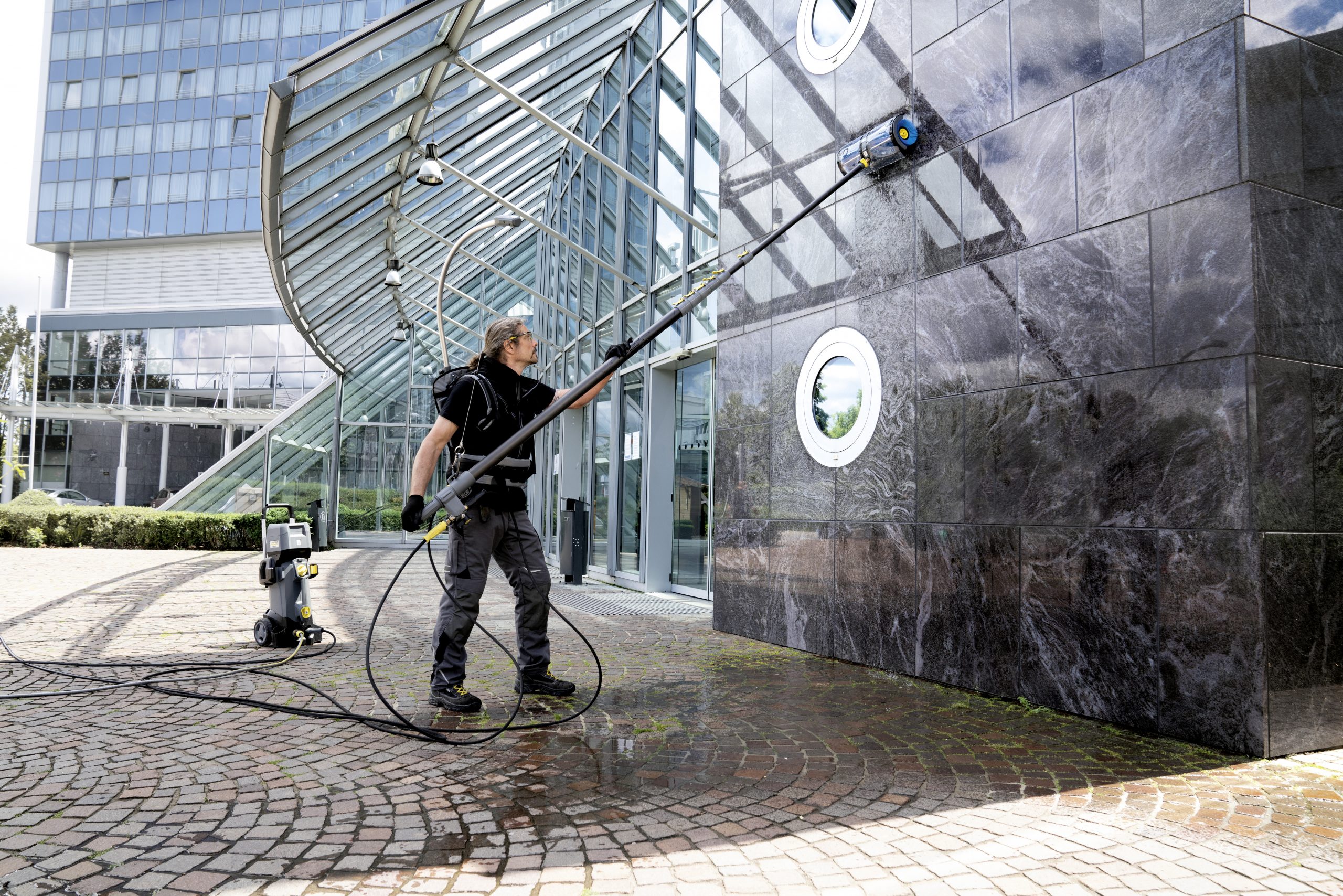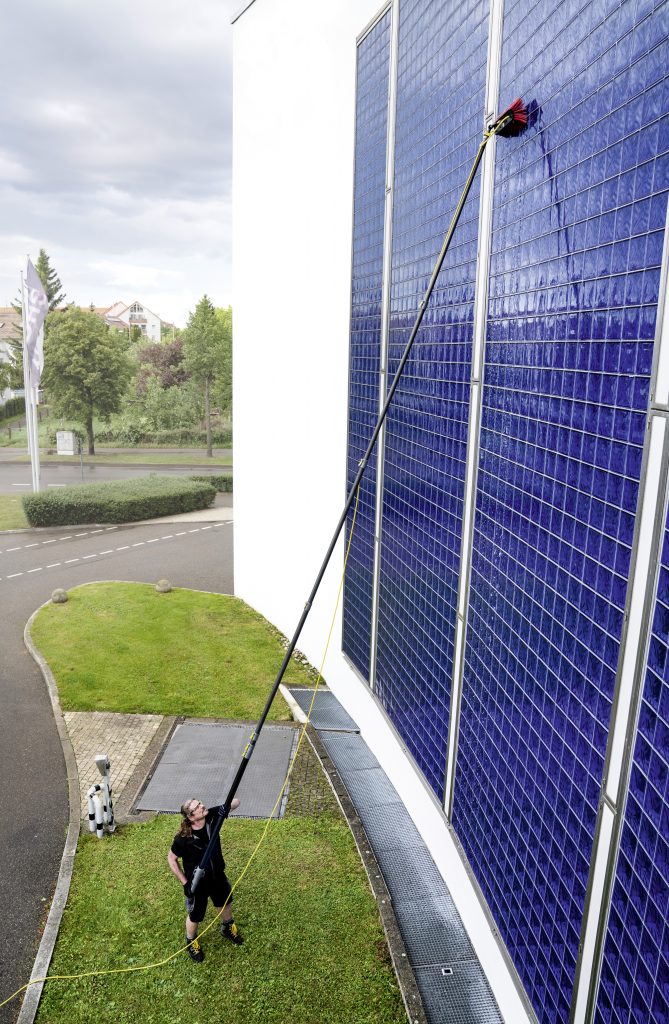
Daniel Took, Head of Professional Product Marketing at Kärcher UK explains best-practice cleaning methods for exterior walls and façades.
When refurbishing exterior walls and façades it is important to ensure that the correct equipment is used, and care is taken to consider the surface material to avoid surface damage. Maintaining exterior walls is a crucial part of retaining or increasing property value and it is important that cleaning is done effectively to enhance value.
Pressure Washing
Most external surfaces can be treated effectively using a hot water high-pressure cleaner, such as Kärcher’s HDS Middle Class range. Their dual ability to clean at high temperatures and provide high-pressure ensures high quality cleaning performance with low water consumption for a controlled cleaning environment.
Hot water is crucial to cleaning external walls as cleaning at a temperature range between 60-80oC results in a faster breakup of dirt and deposits, allowing for easy removal of materials such as oil, grease, and soot. High-pressure cleaning ensures further depth penetration for the removal of moss and lichen’s roots, preventing any regrowth.
Steam Cleaning
Steam cleaning as part of the secondary steam stage is crucial for intensive cleaning. During this stage the water volume is reduced by half and steam up to 155 oC is discharged. The steam gets between the surface and the dirt particles tackling even stubborn dirt such as paints and bituminous coatings.
Cleaning Agents
Cleaning agents can be used alongside hot water high-pressure washers, but they should be applied first and washed off at high-pressure after the application time. When selecting which agent to use it is important to consider the surface material.
When working with natural and artificial stone façades where the surface material can be acid-sensitive, an alkaline cleaning agent must be used to avoid surface damage that can impact the building value and appearance. Acid-resistant stone façades (and plaster façades), however, can be effectively treated using a neutral cleaning agent.
For wooden façades a neutral cleaning agent is ideal although care must be taken to clean with the correct pressure for the correct type of wood. Robust hardwood façades can be cleaned at a pressure of 100 bar and a temperature between 60 °C-80 °C , whilst sensitive timbers, such as larch or spruce, require a pressure of 50 bar.
Metal façades can too be vulnerable to chemicals therefore a neutral cleaning agent is recommended. Prior to cleaning coated or painted surfaces care should be taken to remove chalking (white stains due to washed out pigments). This can be done manually or by using electric, hand-operated polishing machines. Hand-operated machines allow for low-pressure water to flow out through the large opening at the brush preventing water penetration in the insulating layer behind the façade.
For special cases where façades are not to be watered too much or water-saving methods are required, particle and dry ice blasting can be used. These are also good alternatives to high-pressure cleaners if no cleaning agents should be used or there is a limit for wastewater volume. Both methods are also appropriate for removing severe contamination, including graffiti.


